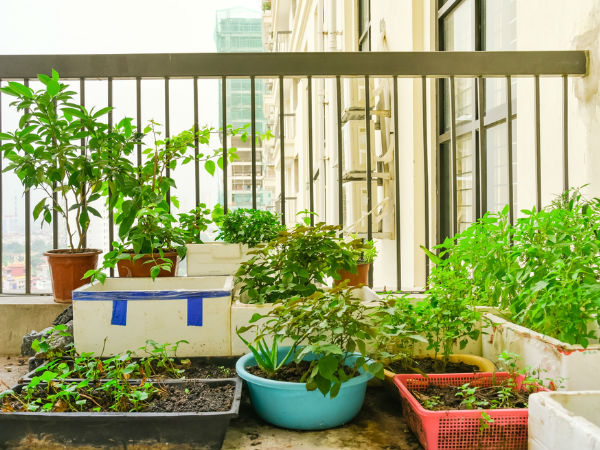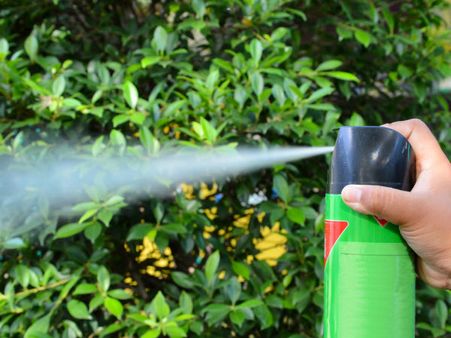Just In
- 1 hr ago

- 2 hrs ago

- 5 hrs ago

- 12 hrs ago

Don't Miss
- Sports
 Who Won Yesterday's IPL Match 34? LSG vs CSK, IPL 2024 on April 19: KL Rahul Stellar Batting Show Decimate Chennai Bowling
Who Won Yesterday's IPL Match 34? LSG vs CSK, IPL 2024 on April 19: KL Rahul Stellar Batting Show Decimate Chennai Bowling - Finance
 Rs 17/Share Dividend: Record Date On April 26; Buy The ICICI Group Stock To Be Eligible?
Rs 17/Share Dividend: Record Date On April 26; Buy The ICICI Group Stock To Be Eligible? - Movies
 Chief Detective 1958 Episode 2 OTT Release Date, Time, Platform: When & Where To Watch? What To Expect? DEETS
Chief Detective 1958 Episode 2 OTT Release Date, Time, Platform: When & Where To Watch? What To Expect? DEETS - News
 Chinese President Xi Jinping Orders Biggest Military Reorganisation Since 2015
Chinese President Xi Jinping Orders Biggest Military Reorganisation Since 2015 - Education
 Exam Pressure Does Not Exist; Studying Punctually is Crucial; Says Aditi, the PSEB 2024 Topper
Exam Pressure Does Not Exist; Studying Punctually is Crucial; Says Aditi, the PSEB 2024 Topper - Automobiles
 Suzuki Swift Hatchback Scores 4 Star Safety Rating At JNCAP – ADAS, New Engine & More
Suzuki Swift Hatchback Scores 4 Star Safety Rating At JNCAP – ADAS, New Engine & More - Technology
 Dell Introduces AI-Powered Laptops and Mobile Workstations for Enterprises in India
Dell Introduces AI-Powered Laptops and Mobile Workstations for Enterprises in India - Travel
 Journey From Delhi To Ooty: Top Transport Options And Attractions
Journey From Delhi To Ooty: Top Transport Options And Attractions
How To Grow Edible Greens At Home
tips to grow edible greens, how to grow edible greens, tips to grow edible greens at home, ways to grow edible greens at home
With spiraling vegetable prices and news about pollutants in our soil and water systems every day, taking the initiative to start a kitchen garden and grow your own vegetables isn't surprising. With certain tips on how to grow edible greens at home, this task can be accomplished. While a lot of folks may eventually aspire for that elusive kitchen garden, it doesn't hurt to make a promising start by growing your own edible greens.
Most edible greens have small root systems, and can easily be grown in pots. However, they do require constant care, and factors, such as the quality of soil and water, and the nature of fertilizers and pesticides (if you're using any). Don't forget that you'll be consuming what you grow, so if you feed your plant toxins, you'll be ingesting those toxins yourself, later on.

You can grow several kinds of edible greens at home, including spinach, coriander, mint, dill, amaranth, fenugreek and several others. You can also grow scallions (sambar onions) and lemon grass - basically anything you wish. Most edible greens prefer well-drained soil, moderate sunlight and regular care. So, here are the tips on how to grow edible greens at home.

A Pot For Your Edible Greens:
The
enthusiastic
gardener
is
besieged
with
options
while
shopping
for
pots.
From
plastic,
to
ceramic,
to
metal
and
terracotta
-
you
have
them
all.
However,
it's
crucial
that
you
select
the
one
that
allows
for
maximum
aeration.
Plastic
pots
have
a
myth
going
for
them
that
they're
durable,
but
they're
not,
and
plastic
is,
in
fact,
second
best
to
terracotta,
which
you
should
take
if
you
can
find
it.
Pick
a
pot
which
has
a
hole
to
the
side
-
not
at
the
bottom
-
and
if
you
plan
to
place
the
pot
inside
your
house,
pick
a
tray
to
go
with
the
pot.
Most
potters
sell
pots
with
trays.
Ceramic,
likewise,
is
not
breathable
and
metal
is
prone
to
rusting;
but
you
can
use
containers
made
of
ceramic
and
metal
as
pot
holders
if
the
basic
pot
is
of
terracotta.
Choose a pot according to the size of the plant. You may never expect spinach to grow very big, but it can grow into a rather big plant if you give it the space to grow. If you're keen on harvesting huge spinach leaves, simply give your spinach plant a bigger pot. Ideally, the right pot should be about 30 inches in diameter, but a bigger pot is always welcome.

Selecting The Right Potting Soil:
Shun the red soil that the chap at the nursery insists is best for your plants, and make your own potting mix. For a 30-inch pot that's about 50 inches high, first pour a little (very little) gravel into the bottom of the pot for the roots to latch on to. Then, add about one tea cup of sand (again, don't overdo it, and don't add too much). Follow this up with a mix of cocopeat and dried cow-dung. Finally top it all up with compost.

Seeds:
You will have to buy seeds only the first time, and ensure you buy only non-GMO seeds. This is one of the best tips to grow edible greens at home. Check the expiry date on the packets, and don't keep the seeds for too long before planting them. You can use a seed tray to plant the seeds and transfer them to your pot once they sprout to ensure a greater chance of success.
Do not over-water your seeds, and ensure they get an adequate sunlight. If you have pets, keep them away from the seed trays. The seeds should sprout in about a week. While transplanting the seeds, gently pick up the seeds with their ‘mother soil' (the soil surrounding the roots) and transplant them into the new pot, so as to reduce trauma.

Care For Your Seedlings:
Once the sprouts begin to take root, it's really only a matter of time before you harvest your leaves. Whenever you need leaves, all you need to do is snip off a few from your plant. Leave the ones that are young and growing for the next day. You will find that as you snip off the leaves, the plant puts out even more leaves for you to snip off.
Never snip off too many leaves - always leave a few on the plant, or it may wilt. Eventually, the plant will grow to such an extent that it will bear flowers, and you can harvest seeds from them. This is a crucial time, and once you've harvested your seeds, remember to clean them (do not wash them), dry them in the sunlight and pack them neatly for later. This is how you could grow edible greens at home.
Your flower-bearing edible green plant can be transplanted somewhere outside, while you sow seeds anew for a second harvest.

Extra Care:
Keep fertilizers and pesticides away from your edible greens because they're particularly susceptible to toxins. All leafy vegetables should be especially regulated for the soil and water they're grown in and for the fertilizers and pesticides that are used on them. Occasionally, spray your edible greens with neem oil to keep pests away, and remember to wash them thoroughly before using them. An exceptionally good organic fertilizer is panchagavya, which can be bought online or at any Gaushala if you have access to one.
Growing your own edible greens at home requires a little effort, but the rewards are tremendous!
-
 yoga spiritualityMaha Shivratri 2024: Bring Lord Shiva's Favourite Plants Home To Garner His Blessings
yoga spiritualityMaha Shivratri 2024: Bring Lord Shiva's Favourite Plants Home To Garner His Blessings -
 home n garden10 Winter-Resilient Flowering Plants for Your Garden That Will Turn Your Outdoor Space Into Vibrant Heaven
home n garden10 Winter-Resilient Flowering Plants for Your Garden That Will Turn Your Outdoor Space Into Vibrant Heaven -
 healthThese Plants Are Helpful To Control Indoor Air Pollution And Boost Lung Health
healthThese Plants Are Helpful To Control Indoor Air Pollution And Boost Lung Health -
 home n garden7 Effective Hacks To Care For Your Houseplants That Will Transform Your Green Friends For Better
home n garden7 Effective Hacks To Care For Your Houseplants That Will Transform Your Green Friends For Better -
 home n gardenYear Ender 2023: Which Plants To Grow In New Year 2024 As Per Your Zodiac Sign
home n gardenYear Ender 2023: Which Plants To Grow In New Year 2024 As Per Your Zodiac Sign -
 home n gardenGreen Sanctuary: 10 Indoor Plants To Bring Tranquility To Your Bedroom
home n gardenGreen Sanctuary: 10 Indoor Plants To Bring Tranquility To Your Bedroom -
 home n garden6 Creative Ways To Decorate Your Home On Tight Budget, The Result Is One-Of-A-Kind!
home n garden6 Creative Ways To Decorate Your Home On Tight Budget, The Result Is One-Of-A-Kind! -
 home n gardenYou Can Sow These Flowering Plants In September And They Will Remain Till Diwali
home n gardenYou Can Sow These Flowering Plants In September And They Will Remain Till Diwali -
 home n garden8 Creative Ways To Decorate Your Home With Plants
home n garden8 Creative Ways To Decorate Your Home With Plants -
 home n garden6 Effective Tips To Make Your Home Smell Amazing
home n garden6 Effective Tips To Make Your Home Smell Amazing -
 home n gardenMonsoon 2023: 9 Simple Tips And Tricks To Take Care of Your Plants
home n gardenMonsoon 2023: 9 Simple Tips And Tricks To Take Care of Your Plants -
 home n garden5 Ways To Add An Organic Touch In Your Home
home n garden5 Ways To Add An Organic Touch In Your Home


 Click it and Unblock the Notifications
Click it and Unblock the Notifications



